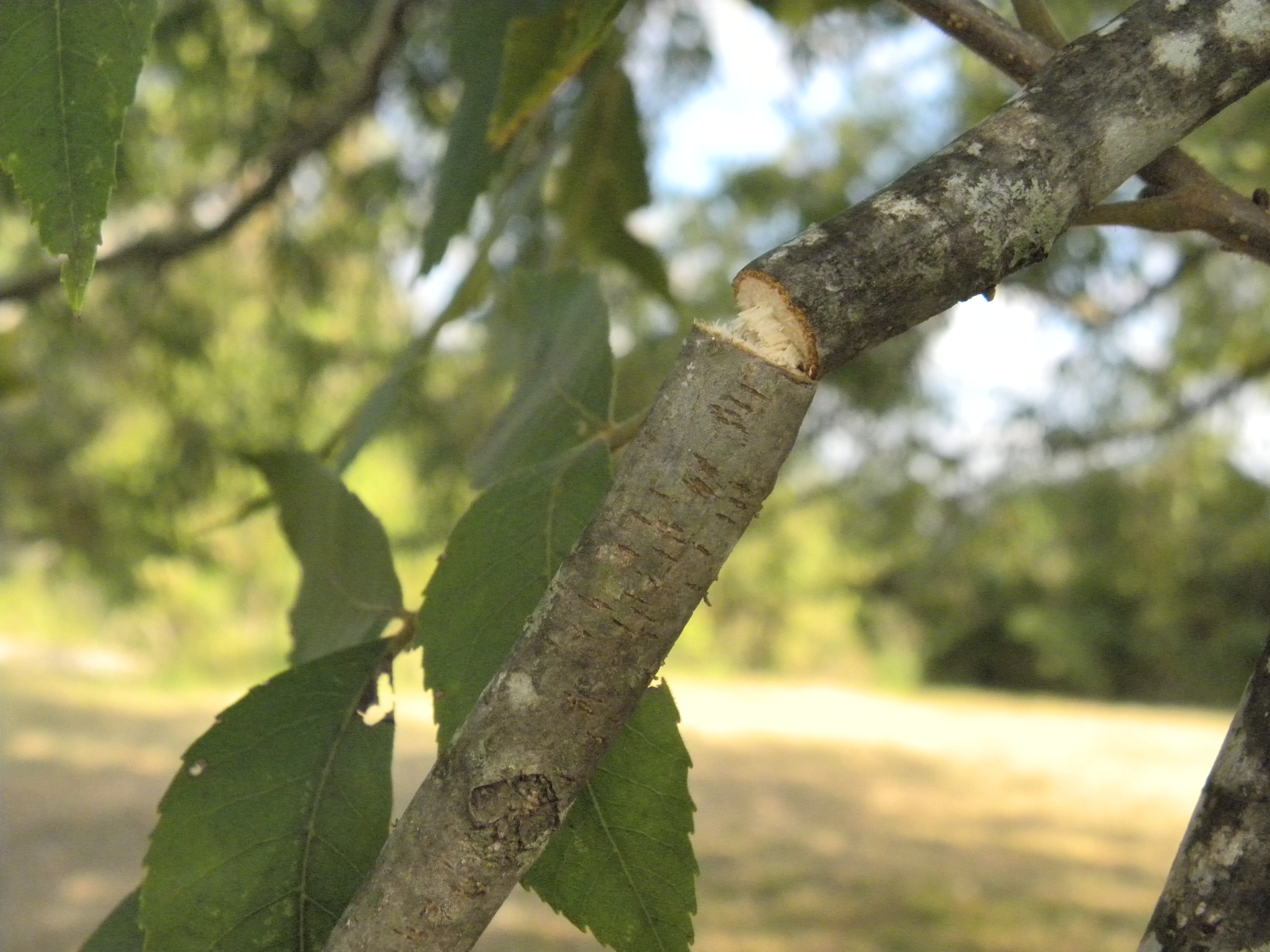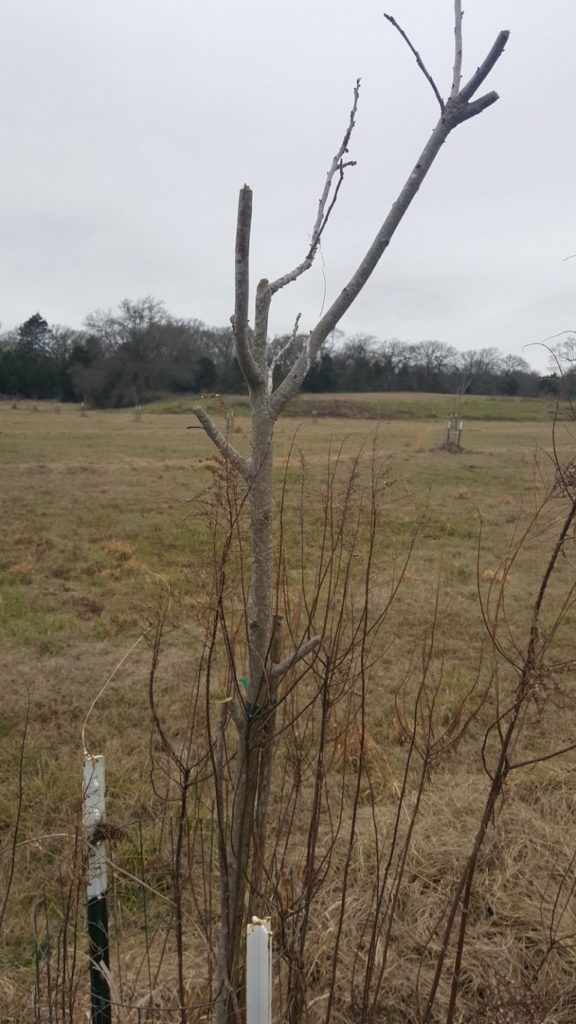
Twig Girdlers Frustrate Homeowners and Commercial Producers
Every fall I receive calls and emails concerning small severed twigs under pecan trees so this is a good time to address this issue. In my list of insects that feed on pecans, I have recorded 63 species that feed in the main trunk, branches, twigs and roots. Of these 63 species, 32 are beetles with most of these being roundheaded borers. Of all the types of roundheaded borers that feed on pecan, I receive more calls on twig girdler damage than any other.
Twig girdler activity occurs during the fall and is characterized by small twigs about the diameter of a pencil with beveled ends found under the tree or hanging in the canopy. Unfortunately, control recommendations today are the same as those suggested by S.W. Bilsing, Ph.D., back in 1916, which were to gather and burn infested twigs. Although damage by this insect does not rank up there with the pecan nut casebearer or pecan weevil in causing an economic loss, it is certainly a frustrating problem for commercial producers and homeowners.
Twig girdlers are most prevalent in the southeastern part of the United States but can be found up in New England and in Arizona.

Taken in Burleson County, Texas, this photo shows just how dangerous twig girdlers can be to young trees. In addition to causing stem deformities, twig girdlers can cause a pecan tree to have lower nut yields the following year or years. (Photo by Bill Ree)
For larger, mature trees this pest is not an important issue, but for young trees, twig girdlers can be a severe problem. The loss of branches on young trees can disrupt the tree’s structure, which may require a grower to rework the tree to acquire the proper structure.
Currently there are no effective means to detect populations in the tree canopy. However, one possible method to detect adult emergence is to place numerous severed twigs in a wire cage, set the cage in the orchard, and watch for adult emergence during the coming summer and fall.
As for the biology of the twig girdler, adult beetles begin to emerge during August and September from twigs that were severed the previous fall. Female beetles then seek out suitable egg-laying sites and, using their mandibles, girdle the twig prior to or just after the start of egg laying. Single eggs are laid underneath the bark at the base of leaf buds with 8 to 12 eggs being laid in a single twig. Female twig girdlers are the only ones to girdle twigs. According to Bilsing’s observations, females will begin to lay eggs 12 to 29 days after emergence with each female laying an average of 175 eggs. This process begins in September and can continue until December. Eggs hatch in 17 to 30 days and larvae will feed in the girdled twigs until the following summer. Adult emergence will begin around mid-August. Both males and females will live for 42 to 84 days.
In addition to pecan trees, twig girdlers have been reported to attack 22 types of hardwood or woody herbaceous plants so clean up of infested twigs may have to extend outside of the orchard. Unfortunately, as I stated earlier the only control recommendation I can give is to gather and burn infested twigs before next summer.